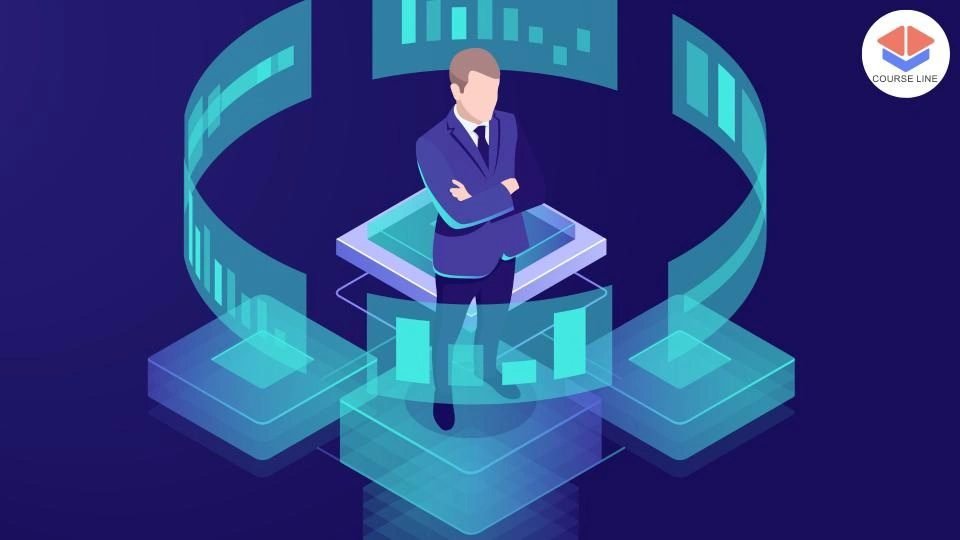Course Features
Price
Study Method
Online | Self-paced
Course Format
Reading Material - PDF, article
Duration
15 minutes
Qualification
No formal qualification
Certificate
At completion
Additional info
Coming soon
- Share
Overview
The digital revolution has transformed the way we bank, pay, and manage money. This course explores the key technologies and systems that define modern digital banking, offering practical insight into how financial institutions use innovation to improve customer experience, security, and accessibility. It begins with an introduction to the fundamentals of digital banking, tracing its evolution from traditional banking methods to today’s seamless, technology-driven financial ecosystems. You’ll gain an understanding of the core concepts, infrastructure, and digital tools that underpin financial technology.
The second module dives into digital banking channels and technologies, explaining how payment cards, ATMs, and Point of Sale (POS) terminals operate within global banking networks. You’ll learn about the different types of cards — debit, credit, prepaid, and virtual — as well as ATM operations, security mechanisms, and transaction processing. The lessons also explore how POS terminals integrate with merchant systems, enabling fast, secure payments across industries.
Next, the course focuses on mobile and online banking — the backbone of today’s financial convenience. You’ll discover how mobile banking applications empower customers to manage accounts, transfer funds, and access services securely on the go. Similarly, you’ll explore the features, tools, and user experience design principles that make online banking efficient, reliable, and customer-centric. Real-world examples will help you understand how financial institutions maintain trust and compliance in an increasingly digital environment.
The final section highlights how digital banking supports financial inclusion, expanding access to financial services in both developed and emerging economies. You’ll also study marketing strategies that financial institutions use to promote digital banking products, enhance adoption, and build customer loyalty. By the end of the course, you’ll have a well-rounded understanding of the technologies, processes, and strategic approaches that make digital banking one of the most transformative sectors in modern finance.
This course is perfect for banking professionals, finance students, fintech entrepreneurs, and anyone interested in understanding how digital technology is reshaping the financial industry. It’s also valuable for customer service managers, IT professionals, and marketing executives working in or aspiring to enter the digital banking sector.
Completing this course opens doors to exciting opportunities in banking, fintech, and financial technology management. Graduates can pursue roles such as digital banking officer, fintech analyst, payment systems specialist, banking operations manager, or customer experience executive. The course also provides a strong foundation for those seeking careers in digital transformation, financial product marketing, or technology-driven financial services, helping you stay competitive in a rapidly changing digital economy.
Who is this course for?
The digital revolution has transformed the way we bank, pay, and manage money. This course explores the key technologies and systems that define modern digital banking, offering practical insight into how financial institutions use innovation to improve customer experience, security, and accessibility. It begins with an introduction to the fundamentals of digital banking, tracing its evolution from traditional banking methods to today’s seamless, technology-driven financial ecosystems. You’ll gain an understanding of the core concepts, infrastructure, and digital tools that underpin financial technology.
The second module dives into digital banking channels and technologies, explaining how payment cards, ATMs, and Point of Sale (POS) terminals operate within global banking networks. You’ll learn about the different types of cards — debit, credit, prepaid, and virtual — as well as ATM operations, security mechanisms, and transaction processing. The lessons also explore how POS terminals integrate with merchant systems, enabling fast, secure payments across industries.
Next, the course focuses on mobile and online banking — the backbone of today’s financial convenience. You’ll discover how mobile banking applications empower customers to manage accounts, transfer funds, and access services securely on the go. Similarly, you’ll explore the features, tools, and user experience design principles that make online banking efficient, reliable, and customer-centric. Real-world examples will help you understand how financial institutions maintain trust and compliance in an increasingly digital environment.
The final section highlights how digital banking supports financial inclusion, expanding access to financial services in both developed and emerging economies. You’ll also study marketing strategies that financial institutions use to promote digital banking products, enhance adoption, and build customer loyalty. By the end of the course, you’ll have a well-rounded understanding of the technologies, processes, and strategic approaches that make digital banking one of the most transformative sectors in modern finance.
This course is perfect for banking professionals, finance students, fintech entrepreneurs, and anyone interested in understanding how digital technology is reshaping the financial industry. It’s also valuable for customer service managers, IT professionals, and marketing executives working in or aspiring to enter the digital banking sector.
Completing this course opens doors to exciting opportunities in banking, fintech, and financial technology management. Graduates can pursue roles such as digital banking officer, fintech analyst, payment systems specialist, banking operations manager, or customer experience executive. The course also provides a strong foundation for those seeking careers in digital transformation, financial product marketing, or technology-driven financial services, helping you stay competitive in a rapidly changing digital economy.
Requirements
The digital revolution has transformed the way we bank, pay, and manage money. This course explores the key technologies and systems that define modern digital banking, offering practical insight into how financial institutions use innovation to improve customer experience, security, and accessibility. It begins with an introduction to the fundamentals of digital banking, tracing its evolution from traditional banking methods to today’s seamless, technology-driven financial ecosystems. You’ll gain an understanding of the core concepts, infrastructure, and digital tools that underpin financial technology.
The second module dives into digital banking channels and technologies, explaining how payment cards, ATMs, and Point of Sale (POS) terminals operate within global banking networks. You’ll learn about the different types of cards — debit, credit, prepaid, and virtual — as well as ATM operations, security mechanisms, and transaction processing. The lessons also explore how POS terminals integrate with merchant systems, enabling fast, secure payments across industries.
Next, the course focuses on mobile and online banking — the backbone of today’s financial convenience. You’ll discover how mobile banking applications empower customers to manage accounts, transfer funds, and access services securely on the go. Similarly, you’ll explore the features, tools, and user experience design principles that make online banking efficient, reliable, and customer-centric. Real-world examples will help you understand how financial institutions maintain trust and compliance in an increasingly digital environment.
The final section highlights how digital banking supports financial inclusion, expanding access to financial services in both developed and emerging economies. You’ll also study marketing strategies that financial institutions use to promote digital banking products, enhance adoption, and build customer loyalty. By the end of the course, you’ll have a well-rounded understanding of the technologies, processes, and strategic approaches that make digital banking one of the most transformative sectors in modern finance.
This course is perfect for banking professionals, finance students, fintech entrepreneurs, and anyone interested in understanding how digital technology is reshaping the financial industry. It’s also valuable for customer service managers, IT professionals, and marketing executives working in or aspiring to enter the digital banking sector.
Completing this course opens doors to exciting opportunities in banking, fintech, and financial technology management. Graduates can pursue roles such as digital banking officer, fintech analyst, payment systems specialist, banking operations manager, or customer experience executive. The course also provides a strong foundation for those seeking careers in digital transformation, financial product marketing, or technology-driven financial services, helping you stay competitive in a rapidly changing digital economy.
Career path
The digital revolution has transformed the way we bank, pay, and manage money. This course explores the key technologies and systems that define modern digital banking, offering practical insight into how financial institutions use innovation to improve customer experience, security, and accessibility. It begins with an introduction to the fundamentals of digital banking, tracing its evolution from traditional banking methods to today’s seamless, technology-driven financial ecosystems. You’ll gain an understanding of the core concepts, infrastructure, and digital tools that underpin financial technology.
The second module dives into digital banking channels and technologies, explaining how payment cards, ATMs, and Point of Sale (POS) terminals operate within global banking networks. You’ll learn about the different types of cards — debit, credit, prepaid, and virtual — as well as ATM operations, security mechanisms, and transaction processing. The lessons also explore how POS terminals integrate with merchant systems, enabling fast, secure payments across industries.
Next, the course focuses on mobile and online banking — the backbone of today’s financial convenience. You’ll discover how mobile banking applications empower customers to manage accounts, transfer funds, and access services securely on the go. Similarly, you’ll explore the features, tools, and user experience design principles that make online banking efficient, reliable, and customer-centric. Real-world examples will help you understand how financial institutions maintain trust and compliance in an increasingly digital environment.
The final section highlights how digital banking supports financial inclusion, expanding access to financial services in both developed and emerging economies. You’ll also study marketing strategies that financial institutions use to promote digital banking products, enhance adoption, and build customer loyalty. By the end of the course, you’ll have a well-rounded understanding of the technologies, processes, and strategic approaches that make digital banking one of the most transformative sectors in modern finance.
This course is perfect for banking professionals, finance students, fintech entrepreneurs, and anyone interested in understanding how digital technology is reshaping the financial industry. It’s also valuable for customer service managers, IT professionals, and marketing executives working in or aspiring to enter the digital banking sector.
Completing this course opens doors to exciting opportunities in banking, fintech, and financial technology management. Graduates can pursue roles such as digital banking officer, fintech analyst, payment systems specialist, banking operations manager, or customer experience executive. The course also provides a strong foundation for those seeking careers in digital transformation, financial product marketing, or technology-driven financial services, helping you stay competitive in a rapidly changing digital economy.
-
-
- Premium Certificate 00:15:00

No Reviews found for this course.
Is this certificate recognized?
Yes, our premium certificate and transcript are widely recognized and accepted by embassies worldwide, particularly by the UK embassy. This adds credibility to your qualification and enhances its value for professional and academic purposes.
I am a beginner. Is this course suitable for me?
Yes, this course is designed for learners of all levels, including beginners. The content is structured to provide step-by-step guidance, ensuring that even those with no prior experience can follow along and gain valuable knowledge.
I am a professional. Is this course suitable for me?
Yes, professionals will also benefit from this course. It covers advanced concepts, practical applications, and industry insights that can help enhance existing skills and knowledge. Whether you are looking to refine your expertise or expand your qualifications, this course provides valuable learning.
Does this course have an expiry date?
No, you have lifetime access to the course. Once enrolled, you can revisit the materials at any time as long as the course remains available. Additionally, we regularly update our content to ensure it stays relevant and up to date.
How do I claim my free certificate?
I trust you’re in good health. Your free certificate can be located in the Achievement section. The option to purchase a CPD certificate is available but entirely optional, and you may choose to skip it. Please be aware that it’s crucial to click the “Complete” button to ensure the certificate is generated, as this process is entirely automated.
Does this course have assessments and assignments?
Yes, the course includes both assessments and assignments. Your final marks will be determined by a combination of 20% from assignments and 80% from assessments. These evaluations are designed to test your understanding and ensure you have grasped the key concepts effectively.
Is this course accredited?
We are a recognized course provider with CPD, UKRLP, and AOHT membership. The logos of these accreditation bodies will be featured on your premium certificate and transcript, ensuring credibility and professional recognition.
Will I receive a certificate upon completion?
Yes, you will receive a free digital certificate automatically once you complete the course. If you would like a premium CPD-accredited certificate, either in digital or physical format, you can upgrade for a small fee.
Course Features
Price
Study Method
Online | Self-paced
Course Format
Reading Material - PDF, article
Duration
15 minutes
Qualification
No formal qualification
Certificate
At completion
Additional info
Coming soon
- Share
Data Governance Manager Level 3 Advanced Diploma
Course Line239₽52,684.51Original price was: ₽52,684.51.₽1,611.72Current price is: ₽1,611.72.Mixology Level 5 Advanced Diploma
Course Line263₽52,684.51Original price was: ₽52,684.51.₽1,611.72Current price is: ₽1,611.72.Textiles and Fabrics In Interior Design
Course Line241₽52,684.51Original price was: ₽52,684.51.₽1,611.72Current price is: ₽1,611.72.





